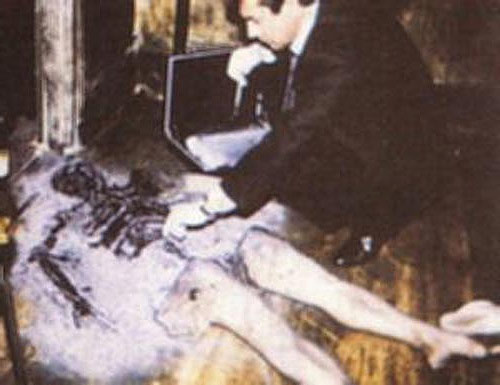Post by Zadkiel on Feb 11, 2016 18:12:53 GMT
Spontaneous combustion occurs when an object - in our case a human or even another living being - bursts into flame from a chemical reaction within, apparently without being ignited by an external heat source.
The first known account of spontaneous human combustion came from the Danish anatomist Thomas Bartholin in 1663, who described how a woman in Paris "went up in ashes and smoke" while she was sleeping. The straw mattress on which she slept was unmarred by the fire. In 1673, a Frenchman named Jonas Dupont published a collection of spontaneous combustion cases in his work De Incendiis Corporis Humani Spontaneis.
The hundreds of spontaneous human combustion accounts since that time have followed a similar pattern: The victim is almost completely consumed, usually inside his or her home. Coroners at the scene have sometimes noted a sweet, smoky smell in the room where the incident occurred.
What makes the charred bodies of spontaneous human combustion so peculiar is that the extremities often remain intact. Although the torso and head are charred beyond recognition, the hands, feet and/or part of the legs may be unburned. Also, the room around the person shows little or no signs of a fire, aside from a greasy residue that is sometimes left on furniture and walls. In rare cases, the internal organs of a victim remain untouched while the outside of the body is charred.
Not all spontaneous human combustion victims simply burst into flames. Some develop strange burns on their body that have no obvious source or emanate smoke from their body when no fire is present. And not every person has died - a small percentage of people have actually survived this incredibly weird phenomenon.

The first known account of spontaneous human combustion came from the Danish anatomist Thomas Bartholin in 1663, who described how a woman in Paris "went up in ashes and smoke" while she was sleeping. The straw mattress on which she slept was unmarred by the fire. In 1673, a Frenchman named Jonas Dupont published a collection of spontaneous combustion cases in his work De Incendiis Corporis Humani Spontaneis.
The hundreds of spontaneous human combustion accounts since that time have followed a similar pattern: The victim is almost completely consumed, usually inside his or her home. Coroners at the scene have sometimes noted a sweet, smoky smell in the room where the incident occurred.
What makes the charred bodies of spontaneous human combustion so peculiar is that the extremities often remain intact. Although the torso and head are charred beyond recognition, the hands, feet and/or part of the legs may be unburned. Also, the room around the person shows little or no signs of a fire, aside from a greasy residue that is sometimes left on furniture and walls. In rare cases, the internal organs of a victim remain untouched while the outside of the body is charred.
Not all spontaneous human combustion victims simply burst into flames. Some develop strange burns on their body that have no obvious source or emanate smoke from their body when no fire is present. And not every person has died - a small percentage of people have actually survived this incredibly weird phenomenon.




